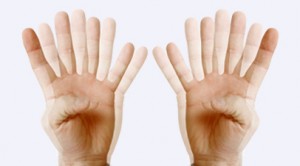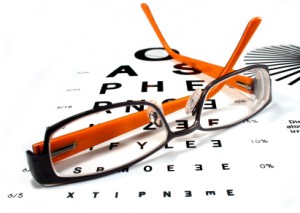Eyes that require glasses can be divided into those that are nearsighted and those that are farsighted. Those that are nearsighted (myopic) require glasses with a minus number, while those that are farsighted (hyperopic) require glasses with a plus number.
A farsighted (hyperopic) eye, is an eye that is somewhat smaller than average. If a regular eye that does not require glasses is approximately 24 millimeter in size, a hyperopic eye will generally be smaller by up to one or two mm, so that its size will be between 22-23 mm. Hyperopia is generally manifest from an early age, first noticed at either childhood or puberty.
This difference in size of 1-2 mm may sound insignificant, but will cause the picture that is perceived by the retina to be blurry. It therefore becomes necessary to sharpen the picture (return it to focus) using glasses or contact lenses. People with hyperopia are called farsighted as a result of the fact that they see objects at a distance more clearly (less blurred), whereas objects that are close to them appear much more blurry. This statement is not entirely accurate as most young people with mild to moderate hyperopia are able to see both distant and near objects well, without the aid of glasses.
However, with time the eye may become fatigued and the picture that it sees may become less clear. In children with hyperopia there is also the risk of the developing a lazy eye. Thus, if an ophthalmologist or optometrist recommend it, it may be advisable for many hyperopes to wear glasses, even if they can manage without them.
While the necessity for reading glasses appears in normal- sighted people at around the age of 45, those with hyperopia characteristically require reading glasses at a younger age, perhaps as young as 40 years old.
To appreciate the differences between far-sighted people (hyperopia, the need for plus lenses) and near-sighted people (myopia, the need for minus lenses), see in comparison the section on Nearsightedness- Myopia).
Why is it important for a person to know that he is hyperopic?
Firstly, so that the person can understand why his vision is blurrier for objects that are near as opposed to objects that are far and why it may be necessary for him to wear glasses. Additionally, a certain percentage of hyperopics (generally those with higher numbers, such as those greater than plus 3) might eventually suffer from a condition known as a narrow angle. This is a condition in which there is a relative crowding in the eye which results in a restriction in the flow of intraocular fluid between the different parts of the eye. As a result, these eyes are at higher risk of developing closed-angle glaucoma.
A small subset of those with hyperopia might also require routine follow-up by an ophthalmologist. A small portion of them may require prophylactic laser treatment, whose purpose is to improve the flow of fluid within the eye and thus decrease the risk of developing closed-angle glaucoma, or worse, an acute attack of glaucoma. This laser treatment is known as laser peripheral iridotomy. You can read about this at length in the section that discusses the laser treatments for glaucoma.
Please note that hyperopia is an entirely different condition than the requirement for reading glasses at an older age. Whereas hyperopia is the result of an eye being smaller (shorter) than average, the necessity for reading glasses for those over the age of 45 is the result of the natural loss of elasticity of the lens, a physiological process (associated with aging) which occurs (unfortunately) in all people.
In summary: People with eyes that are slightly smaller than normal are called hyperopic. They require fitting with glasses that have plus lenses which serve to sharpen their vision, mainly for objects that are near but also for those that are far. People with slight hyperopia can generally get along just fine without glasses. However, they will require reading glasses at a younger age than people who are not hyperopic. Such that if a regular person would normally need reading glasses at around the age of 45 in order to read a book at a comfortable distance, hyperopic people may require reading glasses as early as age 40.


